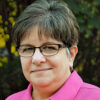When my family moved to Canada, I was amazed to learn that the Canadian Broadcasting Company ran a reality show featuring—of all things!—books. Each year, the Canada Reads program selects five books it encourages Canadians to read, with each title being championed by a public personality. Over several months, CBC runs interviews with each of the authors and the individuals promoting their respective books. Then, through a television show and radio broadcast, a weeklong contest pits the “champions” against each other to discuss the books and vote on them, until one title emerges as the book “all of Canada should read.”
Acknowledging that Canada Reads helps sell books, I think it also points to the possibility of more understanding and community connections, through a shared reading experience.
What happens when people in a community read together?
I know of at least one Mennonite university that each year selects one book—non-fiction or fiction—that all students, faculty and staff are encouraged to read and discuss. The community at Eastern Mennonite University in Virginia has found that reading the same book establishes common ground for conversation among diverse people, across the various academic disciplines.
Those of us who belong to book clubs know that something powerful can happen when a group sits down for conversation about a book all the members have read. In our conversation about books, we also hear each other’s stories. We discover that our reading tastes vary but also that we experience some of the same human struggles—those portrayed by the book and those shared by our reading partners. Looking at a common text, we identify key points of agreement and disagreement and we try to listen better to those with whom we disagree. Book club members come away from the conversation enriched by a common memory they now share.
Last year the CommonRead effort emerged, a sort of book club for Mennonite readers across North America. This is a collaboration between CommonWord, the books and resources arm of Mennonite Church Canada, and MennoMedia, the publisher for both our denomination and Mennonite Church U.S.A. Readers can buy books at a group discount price and can access free study guides and author interviews.
CommonRead recently introduced its fourth book, Raising Disciples: How to Make Faith Matter for Our Kids, by Natalie Fisk, as the 2021 spring-summer read.
I’m curious about how the CommonRead effort might help readers have meaningful conversations. North American Mennonites differ in terms of family backgrounds and the geographical realities we inhabit. We don’t even necessarily speak the same languages. There are generational differences and preferred ways of communicating. And we know that theological perspectives vary among us.
Is it possible that, for those of us who do share a common language, reading together can help us listen better to each other’s point of view? Might our book discussions help us explore how to work on common causes in spite of the differences? Could we find ways to include outsiders in our conversations? Maybe, through shared reading experiences, we can even create common memories that bind us together in new ways as a community.
This issue of the magazine includes CM’s semi-annual Focus on Books & Resources. Browsing through the articles and reviews, you might come across a book you would like to read. Maybe you will also think of potential reading partners and will invite them to join you in exploring it together.
Clarification
In the editorial “The gifts of all,” I identified Leah Reesor-Keller as the first woman to serve as executive minister for a regional church. While this is correct, some historical nuance was missing from that statement.
Starting in January 1992, Mary E. Burkholder served as executive secretary for Mennonite Conference of Eastern Canada (the predecessor of Mennonite Church Eastern Canada). Mary Mae Schwartzentruber succeeded her, beginning as interim executive secretary in January 1998 and serving in that role until the fall of 1999. In later years, the position was renamed “executive minister,” and the term “conference” was changed to “regional church.”
Read more editorials:
Greening the church
The gifts of all
Celebrating the good
What are they doing with our money?
Hope in a bleak midwinter









Leave a Reply
You must be logged in to post a comment.